Economic Operations, Warranty, and Repair Costs in Trucking Industry
VerifiedAdded on 2023/05/29
|5
|1098
|434
Report
AI Summary
This report analyzes the economic operations within the trucking industry, focusing on the relationship between fleet mileage and repair costs for both eastern and western fleets. It reveals an inverse relationship where high brake repair costs lead to less average mileage, though not at a constant rate. The report also highlights that brake repair expenses have a more significant impact on mileage compared to suspension costs. Furthermore, it recommends that Joe, presumably a stakeholder, should consider purchasing a lifetime warranty to mitigate the impact of high maintenance costs, as increased repair expenses do not always guarantee increased mileage. The report advises comparing different warranty packages and seeking feedback from other businessmen to choose the most suitable option. Desklib provides a platform for students to access this report and other solved assignments.
1 out of 5
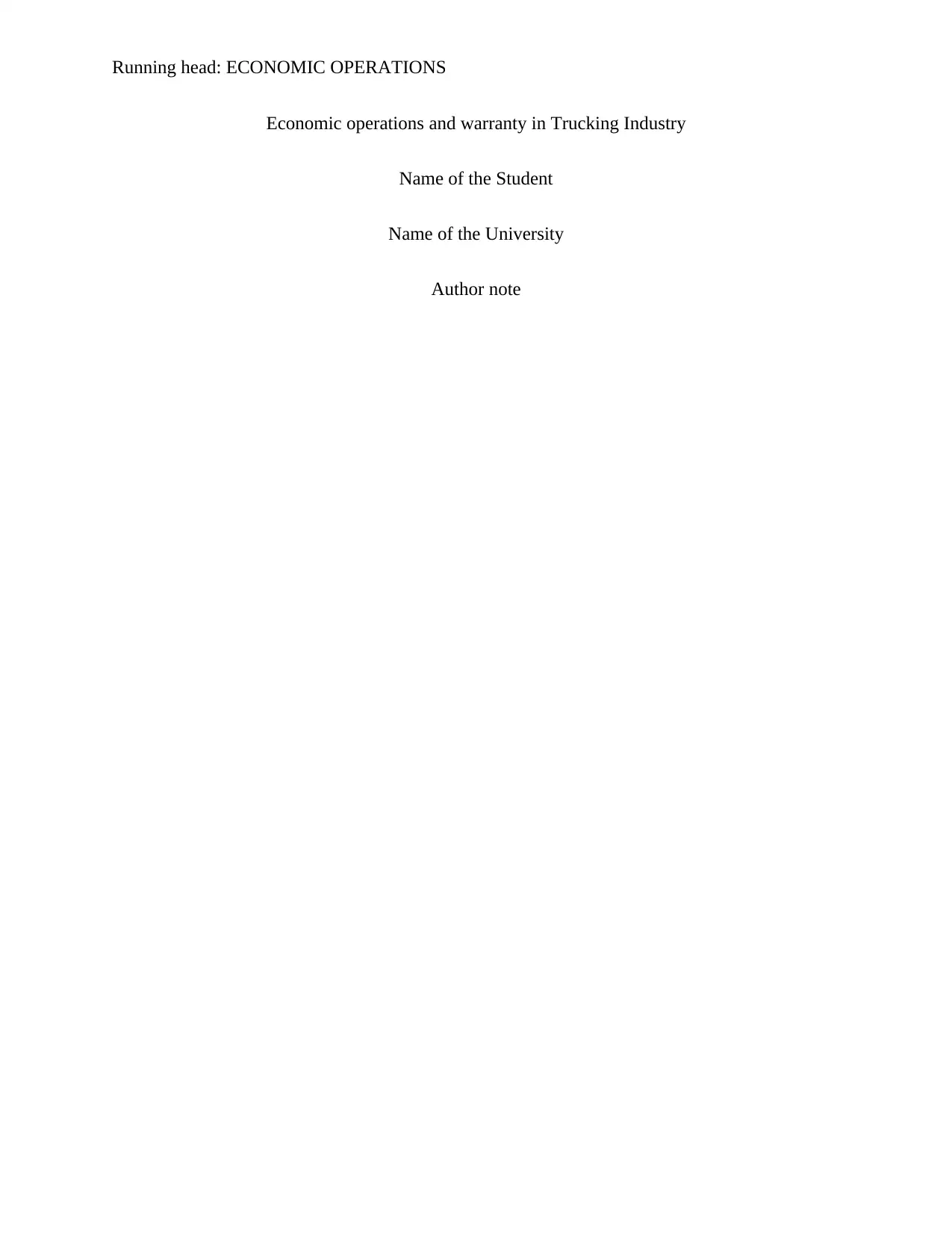
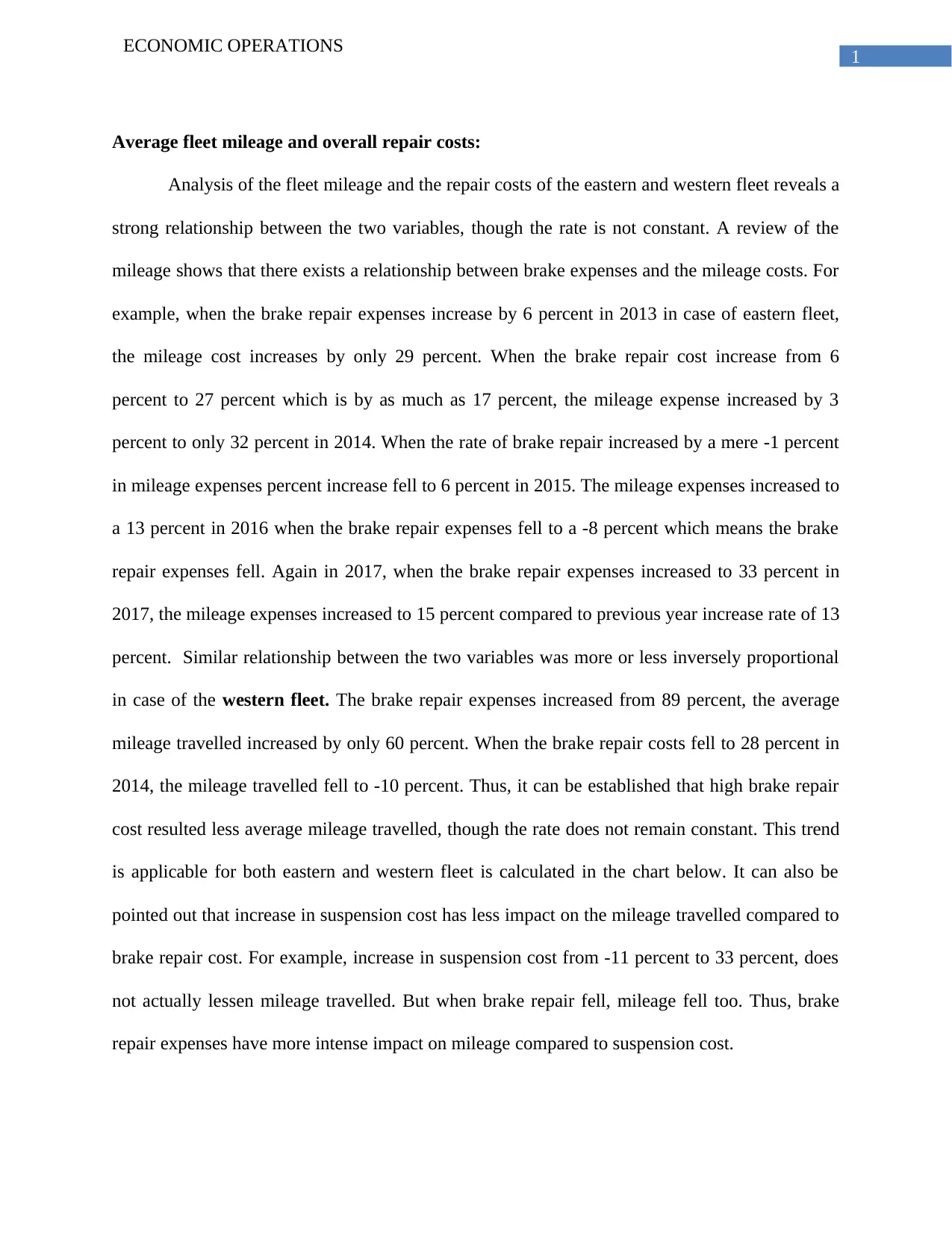
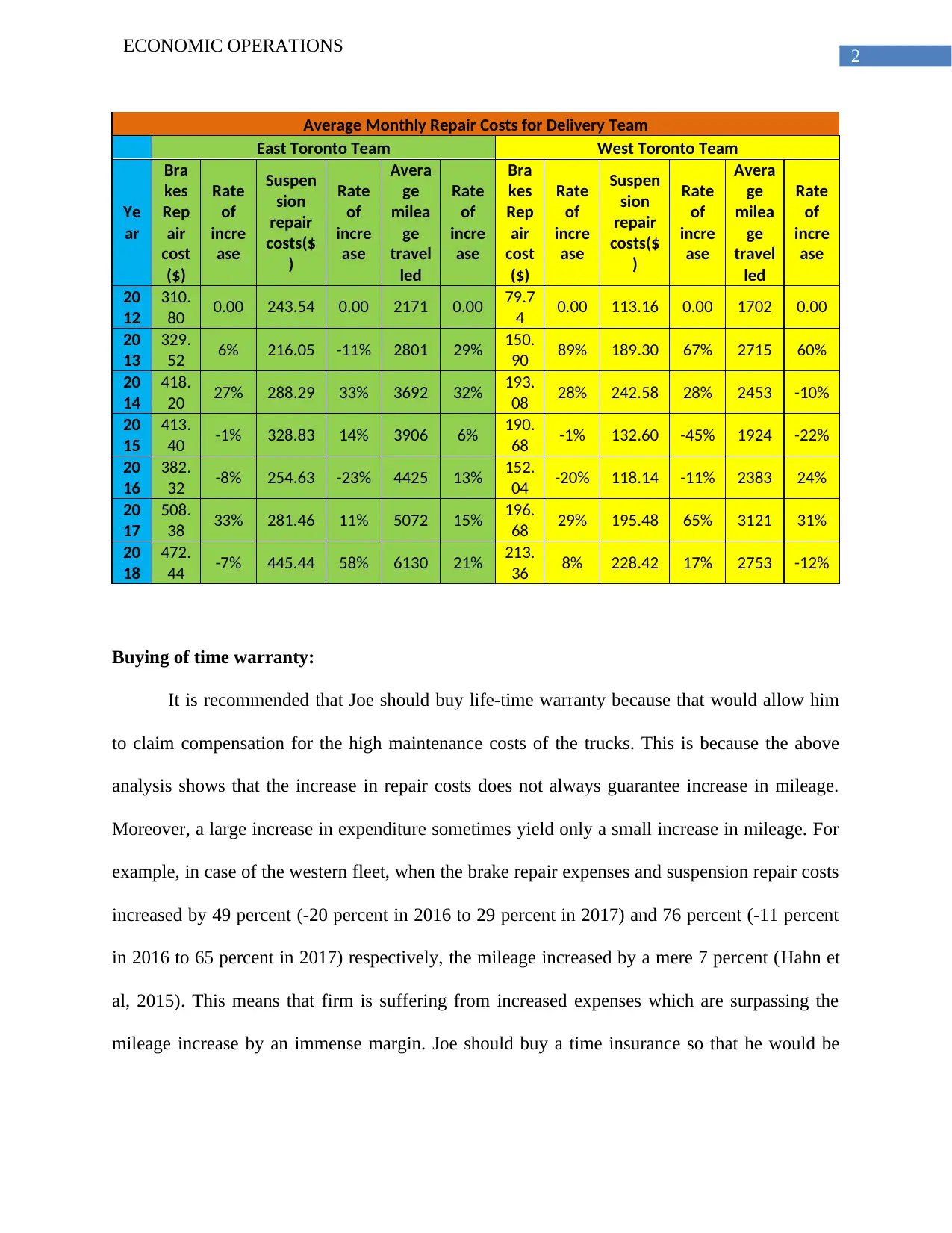

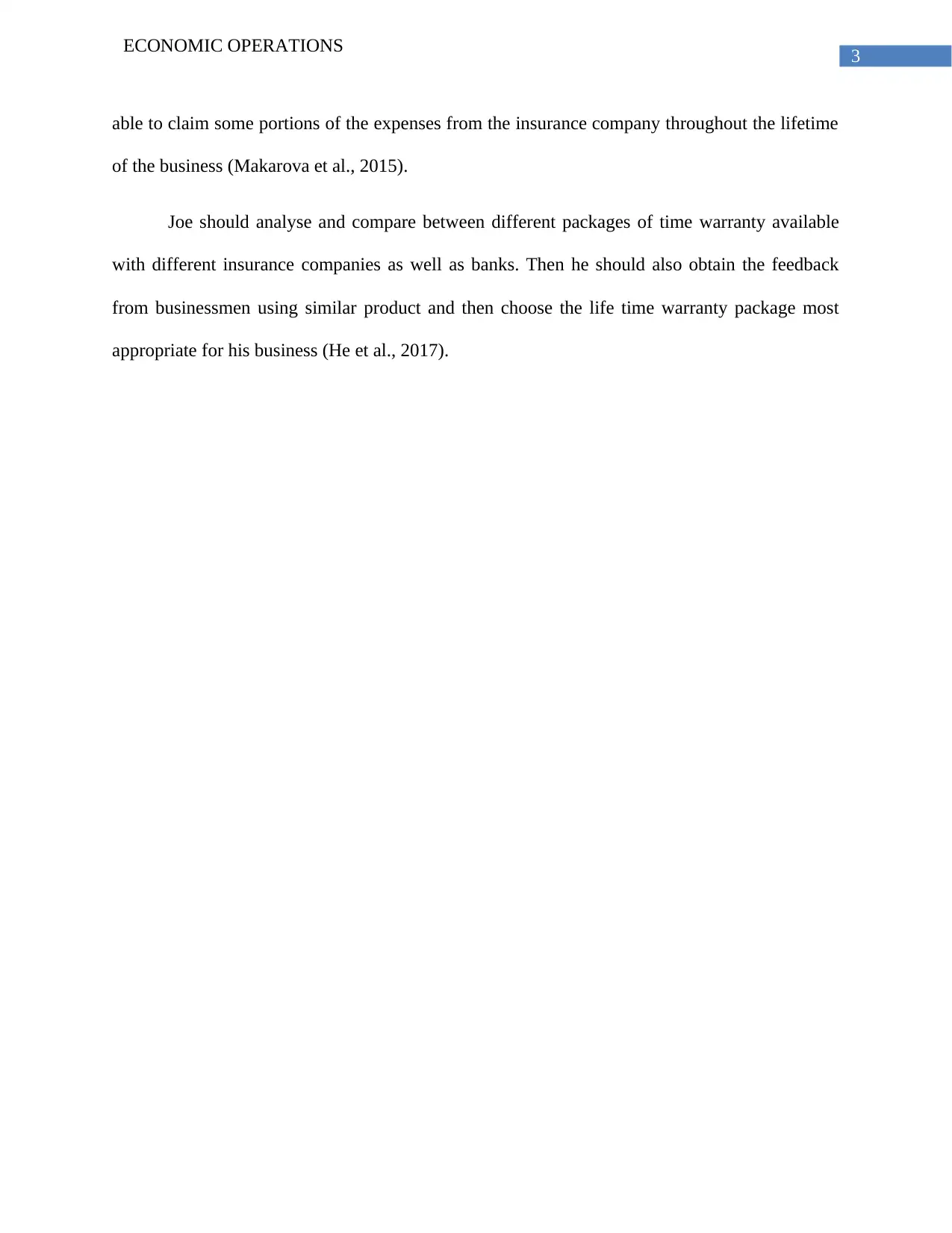
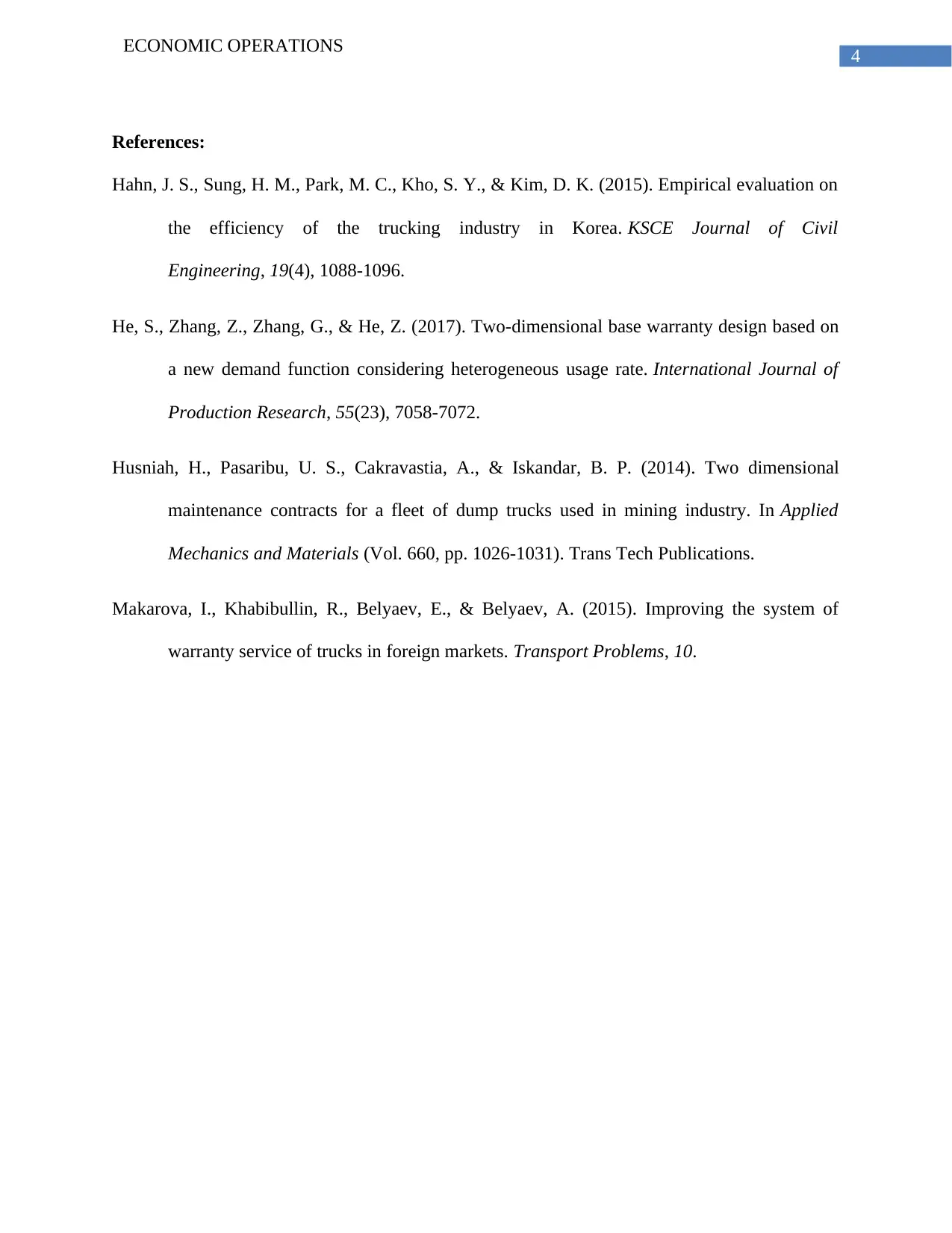
![[object Object]](/_next/static/media/star-bottom.7253800d.svg)